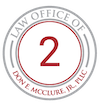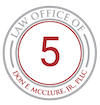The Friday Five 3.29.19

Not all naps are created equal – avoid the 30-minute snooze
Finding some extra time to take a nap is welcomed by nearly everyone I know (myself included!) and most of us think that we should just nap for the exact amount of time that we have to spare. According to the National Sleep Foundation, this isn’t exactly the case. Science dictates that our bodies do best with a strategic amount of sleep in order to feel refreshed, alert, and not groggy. This article explaining the differences and how they relate to the body’s sleep cycles is very helpful when determining the amount of sleep you need; we were surprised to learn that taking a 30 minute nap can actually make you feel worse instead of better. Sleep tight!

Prevent eye strain from screens with the 20-20-20 rule
If you are like most of us, you spend hours in front of a screen at work, at home, and on the go. All of that screen-staring can leave you with tired eyes, headaches, and eye strain. That’s why the American Academy of Ophthalmology recommends the 20-20-20 rule to prevent eye fatigue: for every 20 minutes of screen time, stare at something that is at least 20 feet away for a minimum of 20 seconds. You can read about the benefits of the 20-20-20 rule here and also included in the article are other great tips for overall best practices to protect your eyes.

Not all injuries on someone else’s property mean you have a case
If you hurt yourself while on someone else’s property, there are important questions that help determine whether you may have a claim. The answers to these questions help determine who is responsible, or liable, for the accident and they include:
– Why were you on the property in the first place? (Invitee compared to Trespasser)
– Was the accident preventable or foreseeable? (did the owner know or should the owner have known of the dangerous condition?)
– Did the owner make any effort to warn visitors of any existing problems or dangers?
The best way to figure out if your injury falls under a Premise Liability claim against the property owner is to speak with our office. We can look at the facts, look at your injuries, compare them to the laws, and determine your best plan of action, all at no charge.

Save thousands of dollars by looking at how often you eat out
The general rule of thumb in the restaurant industry is that a meal out will cost 300% more than what it costs to make at home, which probably contributes to the Bureau of Labor Statistics report that the average American household spends about $3,000 per year dining out. Even just one person eating a $10 lunch Monday through Friday for one year equates to $2,500. Add in family meals out of the home and that cost can skyrocket. This article explains the true cost of eating out and provides tips on how to save. You can also look at your monthly statements to see how much you spend eating out, which can provide you with ideas on how to cut back. It might just help your waistline, too!

If you see a trucker put on his hazards, it means there’s a reason to slow down
Did you know that when truckers put on their hazard lights, it almost always means that there is something up ahead that is causing traffic to stop or slow way down? This is just one of the ways that drivers of large trucks try to communicate with other people on the road. This article on common things that truck drivers wish other drivers knew addresses some of the behaviors that can be extremely dangerous on the roads and is a helpful reminder to all drivers – especially new ones.
